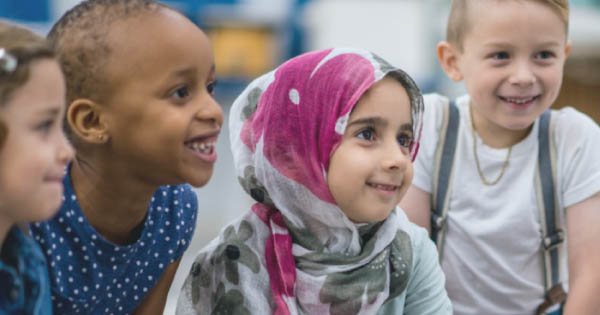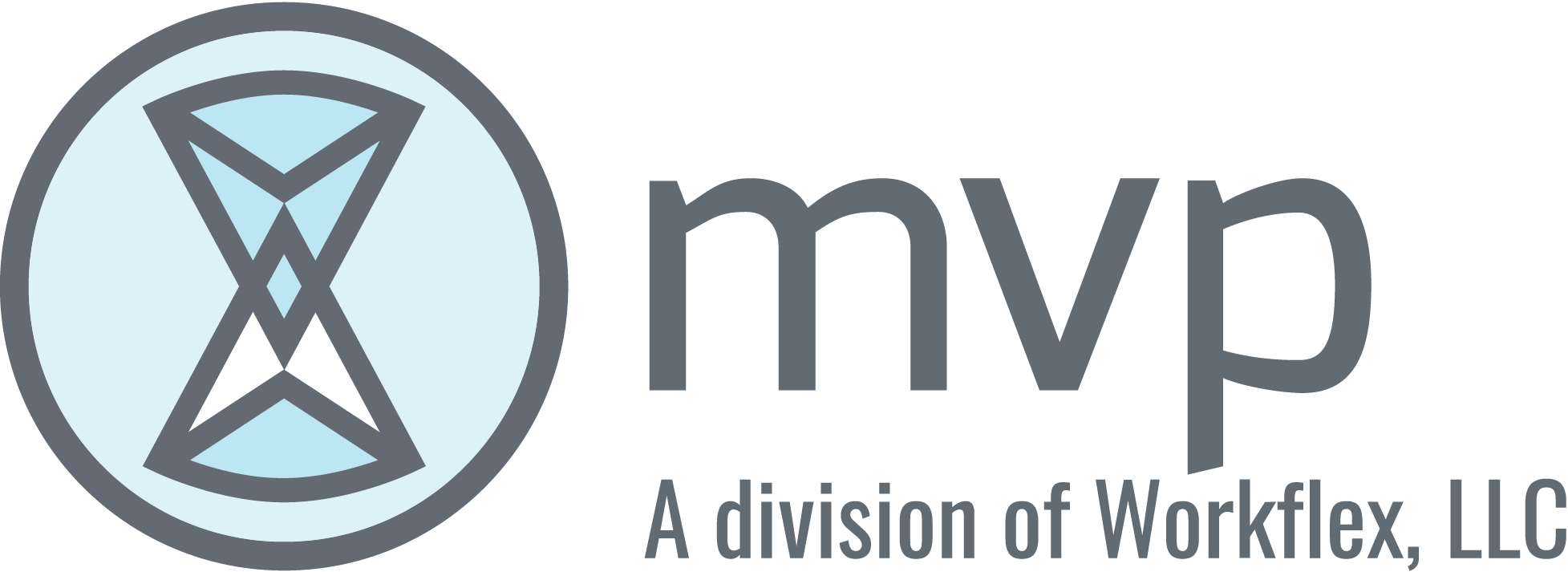Equity Challenge
Equity Challenge
We cannot cease in confronting our country’s history and relationship to identity. It is time for us to take a closer look at the inequities that are deeply rooted in our systems and institutions and work together to create an America where every individual has the opportunity to succeed, regardless of race, gender, sexuality, religion, and identity.
Over the next 12 months, we will explore difficult topics, like structural racism, segregation, and privilege, to open up dialogue on how we can be champions of equity in our personal and professional lives.
Equity Challenge Monthly Content
Month 1
Month 2
Month 3
Month 4
Month 5
Month 6
Month 7
Month 8
Month 9
Month 10
Month 11
Month 12
Month 13
Month 14
Month 15
Month 16
Month 17
Month 18
Month 19
Month 20
Month 21
Personal Racial Identity

Month 1 Challenge
How do you think about your racial identity and its relevance to your work/volunteerism/studies? Identity matters. Who we think we are and who others think we are can have an influence on all aspects of our lives. Think about the first time you became aware of your racial identity. What comes up for you?
Please choose two or more of the below activities to complete:

ACTIVITY 1
Watch an interview of author/educator, Tim Wise, conducted by Dr. J. Q. Adams at Western Illinois University. In this interview, Wise discusses colorblindness, white flight and its impact on student populations, the role of school principals in strengthening the learning of all students, Affirmative Action and white preferences, and the opportunities college offers students who are open to deepening their understanding of their own identities while learning about the cultural identities of others.
Select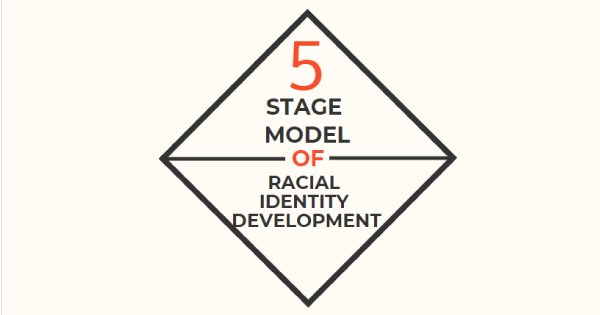
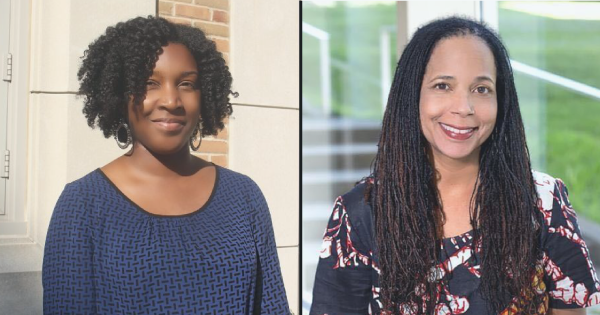
ACTIVITY 3
Read/listen to this interview with Shardé Smith, assistant professor of human development and family studies at the University of Illinois, on how to speak to children about race and racism.
Select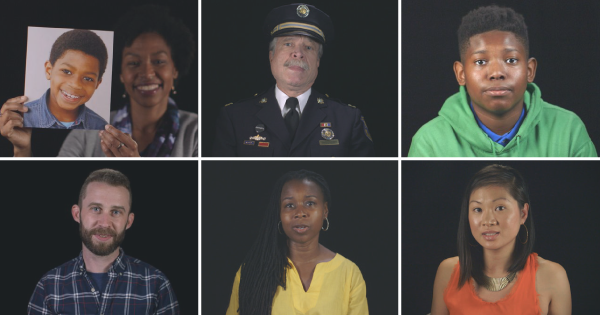
ACTIVITY 4
Watch one or more of the short videos and reflections from the New York Times on racial identity in America.
Select
ACTIVITY 5
Journal about your own racial identity. You might consider:
- When did you first become aware of your racial identity?
- What messages did you learn about race from your school and family? Did they align with what you’ve seen in your life?
- Think of a time when the way others perceived your racial identity affected how they treated you?
Understanding and Reflecting on Our Bias

Month 2 Challenge
We all have bias. But often, we are not aware of the biases that we subconsciously hold. Research shows that years of structural and cultural constructs have deeply embedded stereotypes into our culture, and consequently into our own subconscious. Our experiences and learned stereotypes create shortcuts in your brain that cause you to make assumptions about people, actions, and communications. For example, according to a recent study, companies are more than twice as likely to call minoritized applicants for interviews if they submit whitened resumes than candidates who reveal their race.
But research also shows that we can actively rewire these neural associations by being more intentional about recognizing and acknowledging our biases. This week’s focus is on personal reflection— taking the time to uncover some of our own biases and reflecting on how we take control of these unconscious constructs.
Reflection on biases is not intended to impose guilt. Recognizing your own biases and understanding where those biases come from is part of your journey of self-discovery and learning. Feeling guilt could lead to defensiveness and it becomes very difficult to foster the kind of attitude and behavioral changes needed to address racism.
Please choose one or two of the below activities to engage with for 15 minutes this week, and if you have time, we encourage you to complete more.
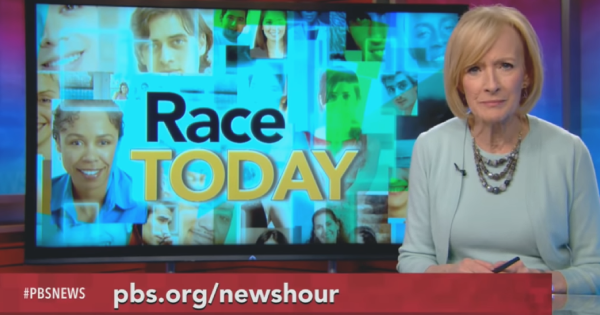
ACTIVITY 1
Watch this PBS special on how unconscious race bias affects millennials. This segment also discuss how race bias affects our actions and the development of a special race lab by psychology researchers at New York University to study implicit bias.
Select
ACTIVITY 2
Read University of Illinois News Bureau interview with Professor Travis Dixon, “Is it possible to overcome our biases in a face of conflict?”
Select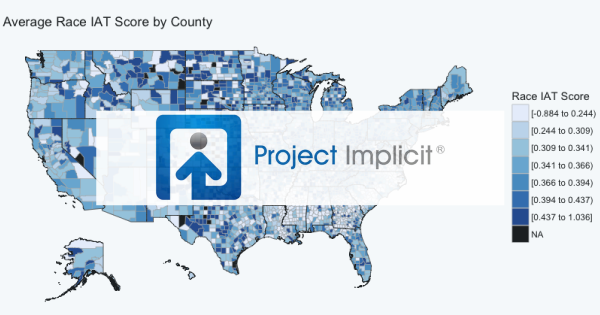
ACTIVITY 3
Go deeper and take Project Implicit Hidden Bias tests, created by psychologists at top universities, to uncover some of your own unconscious biases. Remember, having biases doesn’t make you a bad person—it only makes you human. TIP: Proceed as a guest to access their library of tests and find out your implicit associations about race, gender, sexual orientation, skin tone, and other topics.
Select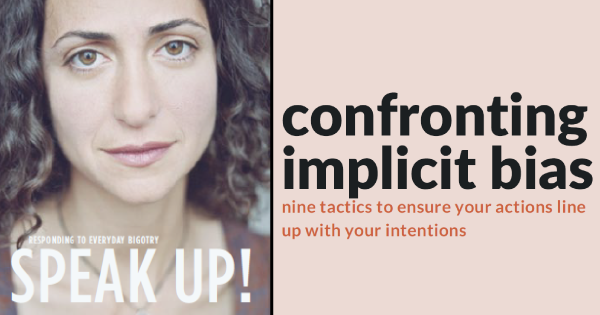
ACTIVITY 4
Read one or more of the compelling personal stories featured in the Speak Up Handbook by the Southern Poverty Law Center. We would like to point you to page 19 titled “What Can I do About My Own Bias?” but feel free to use the table of contents on page 2 to explore other topics that interest you. You can also check out the nine tactics to ensure your actions line up with your intentions.
What is Privilege?

Month 3 Challenge
Privilege is the unearned social, political, economic, and psychological benefits of membership in a group that has institutional and structural power. Having privilege means you have fewer barriers to overcome to be successful. There are many types of privilege that different groups have in the US. We commonly hear about privilege because of race or gender, but privilege also exists for different groups based on religion, sexuality, ability, class, education level. Read more about 5 common types of privilege.
As we continue to explore the different types of privilege and levels of equity, it is important to think about “intersectionality”, introduced by Kimberle Crenshaw, and how it connects. Intersectionality is a lens for seeing how aspects of a person’s identities and various forms of inequality often operate together and exacerbate each other.
Please choose one or two of the below activities to engage with for 15 minutes this week, and if you have time, we encourage you to complete more.

ACTIVITY 1
Take this eye-opening privilege self-assessment by Buzzfeed to discover where you are on the spectrum.
Select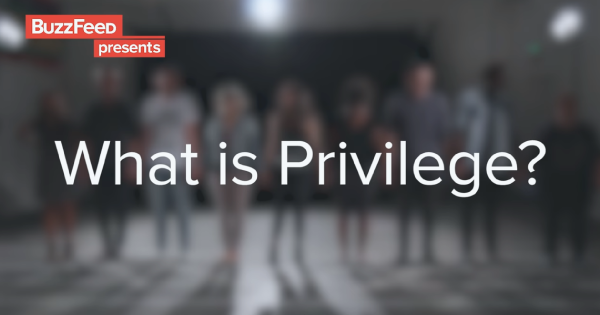
ACTIVITY 2
Watch this short, powerful Buzzfeed video featuring a privilege walk. See how privilege shows up differently for this group of co-workers. Note: this video may be triggering for some people of color.
Select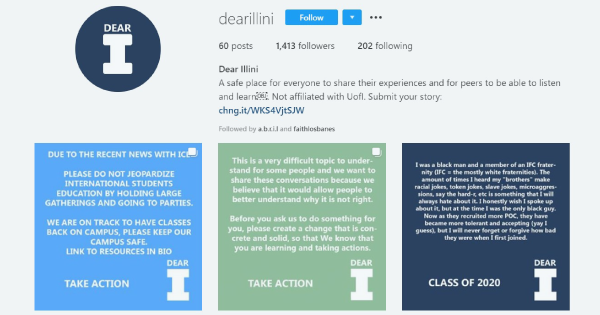
ACTIVITY 3
Read as University of Illinois students share experiences of social injustices and on-campus discrimination in the university’s Daily Illini.
Select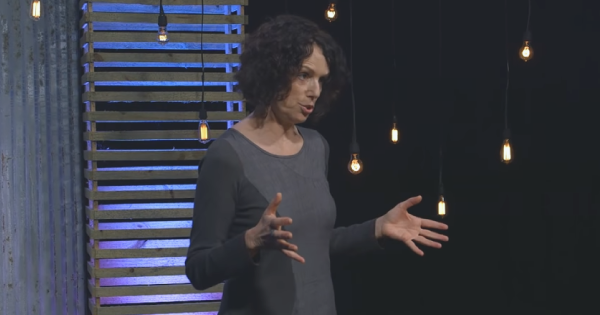
ACTIVITY 4
Watch this video from Robin DiAngelo, author of White Fragility about how racism isn’t only individual acts of discrimination, it is a deeply embedded system that impacts all of our lives.
Talking About Race is Challenging for Some. Here’s Why.

Month 4 Challenge
Have you heard of the term “White Fragility?” For white people, “White Fragility” refers to their discomfort and avoidance of racially charged stress, which perpetuates racial inequity. Many people of color, multiracial, and Indigenous people are familiar with this concept, but may not be familiar with the term.
As we continue to explore the different types of privilege and levels of equity, it is important to think about “intersectionality”, introduced by Kimberle Crenshaw, and how it connects. Intersectionality is a lens for seeing how aspects of a person’s identities and various forms of inequality often operate together and exacerbate each other.
Dr. Robin DiAngelo describes white fragility as a state of being for white people in which even a minimum amount of racial stress becomes intolerable, triggering a range of defensive moves. These moves can include the outward display of emotions such as anger, fear, and guilt, and behaviors such as argumentation, silence, and leaving the stress-inducing situation. These behaviors shut down conversations and prevents open and honest conversations about how structures are in place that provide everyday advantages to white people.
Please choose one or two of the below activities to engage with for 15 minutes this week, and if you have time, we encourage you to complete more.
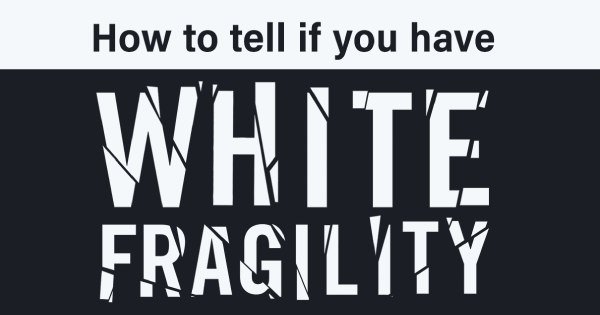
ACTIVITY 1
Take a quick quiz from the publisher of “White Fragility: Why It’s So Hard for White People to Talk about Racism,” Robin DiAngelo, PhD, to see if you exhibit “White Fragility” traits. Want to dive in further? Read a short article by Dr. DiAngelo that unpacks how we continue to reproduce racist outcomes and live segregated lives.
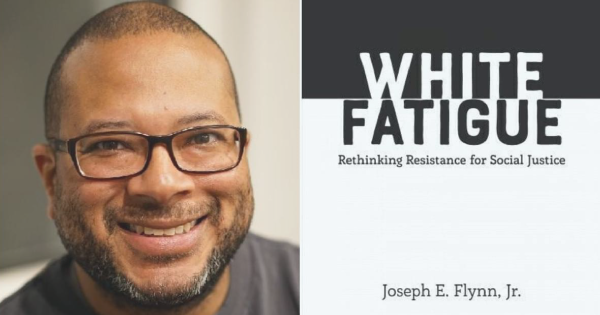
ACTIVITY 2
Listen to The 21st show interview with Joseph E. Flynn Jr., author of White Fatigue: Rethinking Resistance for Social Justice, explains how white people can understand and confront racism.
Select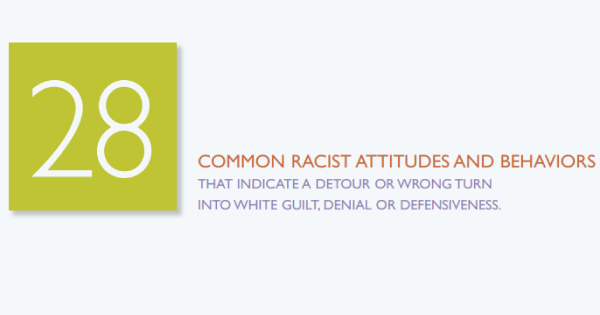
ACTIVITY 3
Review this list of 28 common racist attitudes and behaviors that indicate a detour or wrong turn into white guilt, denial or defensiveness.
Select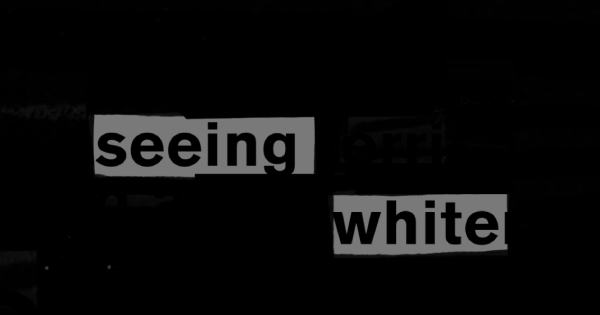
ACTIVITY 4
Listen to Scene On Radio’s podcast series Seeing White which aims to discuss racism by looking into the history of how the concept of ‘whiteness’ came to be.
The Impact of Racial Trauma on Black, Indigenous and other People of Color.

Month 5 Challenge
On October 12, 2019, Atatiana Jefferson, a black woman, was murdered by a police officer in her home and in front of her nephew, while playing video games with him. A welfare check-up, requested by her Black neighbor, was the impetus for the call to police. Weeks after her death, her father died of a massive heart attack.
News like this is traumatizing and re-traumatizing to people of color. It is like a wound that never heals. Research has linked racism to psychological distress, physical health problems, depression, anxiety, and trauma. The internalization of bias and oppression can cause great distress to minds, bodies, and spirits.
As Dr. Monnica Williams of the University of Connecticut has written: “What we really need is a large-scale shift in our social consciousness to understand the toll this takes on the psyche of victims so that even small acts of racism become unacceptable. We need those who witness racism to speak out and victims to be believed.”
Please choose one or two of the below activities to engage with for 15 minutes this week, and if you have time, we encourage you to complete more.
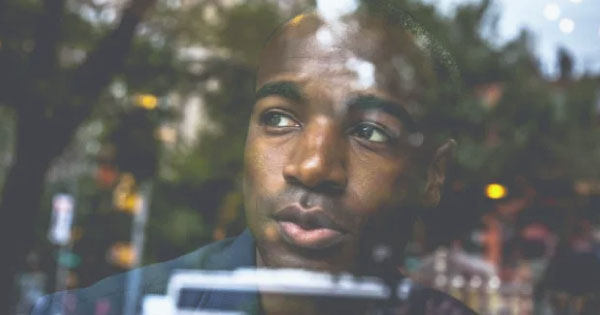
ACTIVITY 1
We invite you to read this short article by Dr. Williams to better understand the effects that racism can have on your mental health.
Select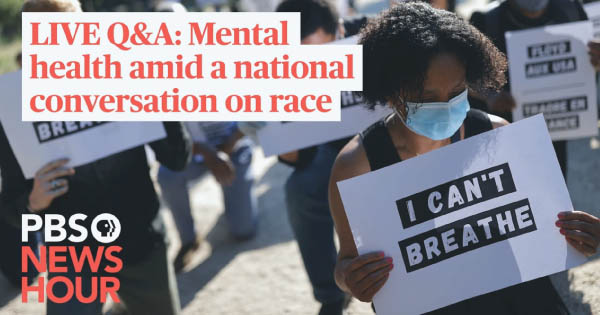
ACTIVITY 2
Read this list of 8 ways to practice self-care to support you and your loved ones when you are personally affected by racism.
Select
ACTIVITY 3
Watch this PBS News Hour segment on how to combat the mental toll of racism.Watch this PBS News Hour segment on how to combat the mental toll of racism.
SelectLevels of Racism

Month 6 Challenge
As our fifth month comes to an end, we hope you have taken the opportunity to look inside yourself and expand your mind through the different challenges offered. As we move into month six, prepare to shift your focus from the personal reflection that we have been exploring to a broader view of racial equity and social justice.
Are you seeing and addressing how racism operates at different levels? Dr. Camara Jones, Senior Fellow at the Morehouse School of Medicine, says that in order to address racism effectively, we have to understand how it operates at multiple levels. Often what people think of first and foremost is interpersonal racism. Only seeing this level means that we fail to see the full picture that keeps the system of racism in place. The graphic below illustrates all the domains in which racism operates.
Please choose two or more of the below activities to complete:

ACTIVITY 1
Watch Dr. Jones’ TED talk on the “Allegories on Race and Racism” where she shares four short stories to help us understand privilege and racism.
Select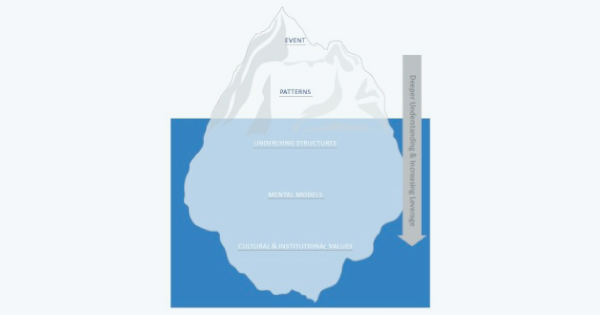
ACTIVITY 2
Read a blog post by Cynthia Silva Parker, which gives an overview of four levels of racism and the need for a systemic approach to seeing and addressing oppression.
Select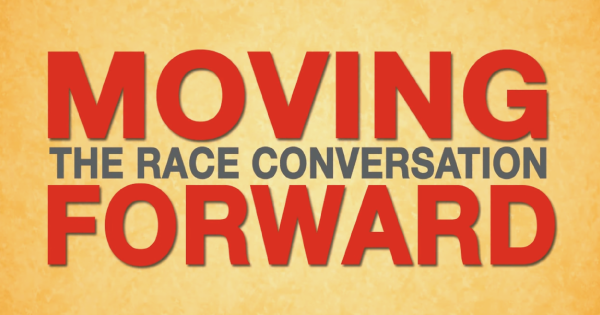
ACTIVITY 3
Check out this short video from Race Forward about the levels and the importance of looking at systemic, not simply individual, racism.
Select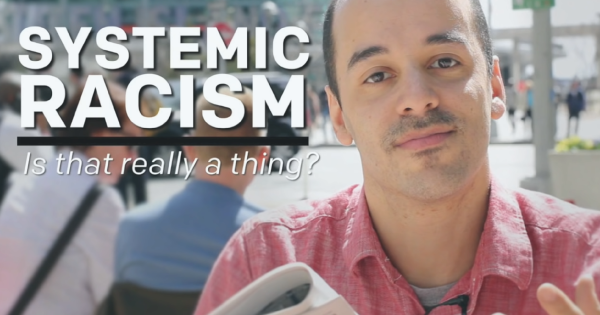
ACTIVITY 4
Review the Talking About Race Toolkit from the Center for Social Inclusion because how we talk about race matters and impacts our ability to work against systemic inequities.
Select
ACTIVITY 5
Have questions about the content you are engaging with during the Challenge? Want to connect with others and reflect on our shared experiences? Encourage your local community organizations to lead the conversation.
Opportunity in Illinois

Month 7 Challenge
In Illinois alone, over 1.1 million working households – or 35% – are struggling to afford basic necessities like housing, childcare, food, transportation, and technology, according to the United Way of Illinois 2020 ALICE Report. These households, also known as ALICE – Asset Limited, Income Constrained, Employed — earn more than the Federal Poverty Level, but not enough to cover the basic cost of living, called the ALICE threshold. This means that a parent within an ALICE household may have to make trade-offs between necessities like rent, stocking the refrigerator or going without healthcare as a parent to ensure that a child has access to preschool. However, when you disaggregate the data, they tell another story. Fifty six percent (56%) of Black households are struggling to afford basic necessities, which is almost double that of White households—just 30%.
As Illinois recovered from the Great Recession, more Black households fell below the ALICE Threshold, with an 8% increase from 2010 to 2018. At the same time, the number of Latinx and Asian households considered ALICE grew by 24% and 28% respectively. In comparison, the number of white households under the threshold declined by 2%.
We don’t have all the data yet, but it’s very likely that more households are struggling to meet their basic needs now, as families have lost jobs and loved ones due to COVID-19. This means many parents, especially Black parents, are deciding whether to pay rent and bills or buy food.
We know that where you live and where children are raised can have a strong influence on opportunity. We also know that when these factors are combined with race, people of color are disproportionately impacted. Over the next weeks, we will be exploring how ALICE, race, and other factors impact a person’s housing, health, education, financial stability, and more.
Please choose two or more of the below activities to complete:

ACTIVITY 1
Check Out the ALICE Report for the State of Illinois (based on 2018 data) and dig down further into your county.
Select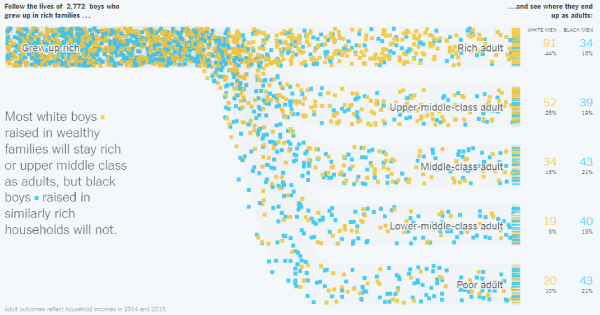
ACTIVITY 2
See this New York Times article debunking widely held beliefs about income inequality and exploring the disproportionate impact race has on boys.
Select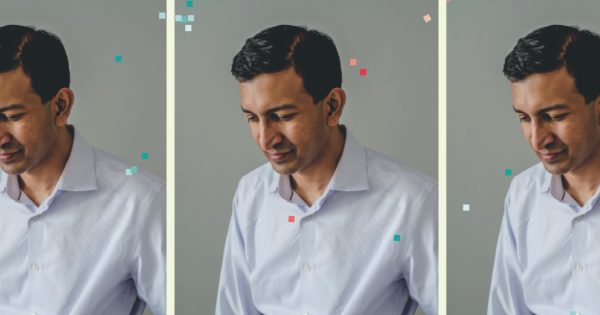

ACTIVITY 4
Journal about how the data and stories in today’s challenge compares with the commonly told story that the United States is a land of opportunity.
Segregation in Illinois

Month 8 Challenge
Institutional Racism is defined as “the systematic distribution of resources, power and opportunity in our society to the benefit of people who are white and the exclusion of people of color.” – Solid Ground
When you hear the word segregation, what do you think of? Many of us think back to the Civil Rights Movement. Yet, American cities continue to be highly segregated. Using U.S. Census Bureau data, Governing Magazine found Chicago ranks as the third most segregated metro area in the nation. Illinois downstate cities are also being disproportionally segregated, with Peoria being the most segregated city when it comes to schools and sixth most segregated metro area in the nation in terms of Black and White residential segregation.
To assess current levels of residential segregation, Governing analyzed the latest 2017 fiveyear American Community Survey estimates from the Census Bureau. Our primary measure is what’s known as the index of dissimilarity, with higher values (on a scale of 0 to 1) representing higher levels of segregation between blacks and whites.
Present-day racism was built on a long history of racially distributed resources and ideas that shape our view of ourselves and others. It is a hierarchical system that comes with a broad range of policies and institutions that keep it in place. Policies shaped by institutional racism that enforce segregation include redlining, predatory lending, the exclusion of veterans from the G.I. bill, and the forced segregation of neighborhoods by the Federal Housing Authority. As a result of institutional racism, inequities persist in employment, housing, education, healthcare, government and other sectors. ore.
Please choose two or more of the below activities to complete:
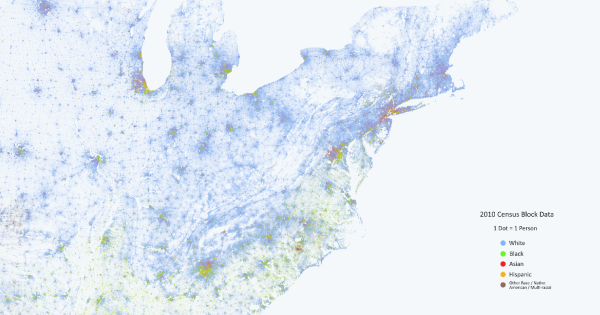
ACTIVITY 1
Explore the Racial Dot Map created by the University of Virginia, which uses colored dots to visualize how racial segregation appears in our communities. We encourage you to zoom into Illinois and your city to see how it plays out in our backyard. Read more about the methodology.
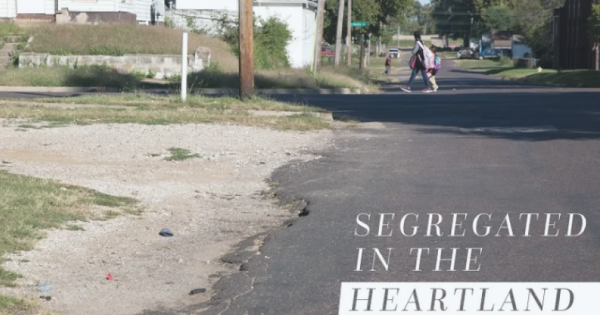
ACTIVITY 2
Read stories in Governing Magazine series “Segregated in the Heartland: An Investigative Series” surrounding issues of segregation in Illinois.
Select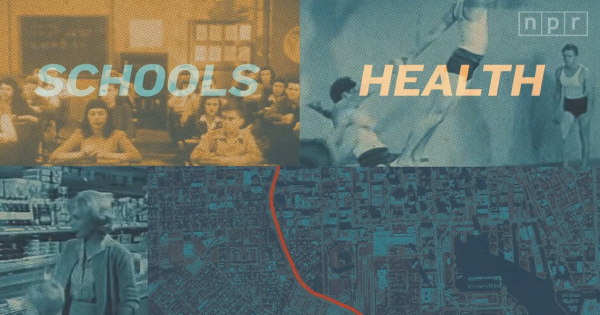
ACTIVITY 3
Why are cities still so segregated? Watch this quick video where NPR’s Code Switch looks at the factors contributing to modern day segregation.
Select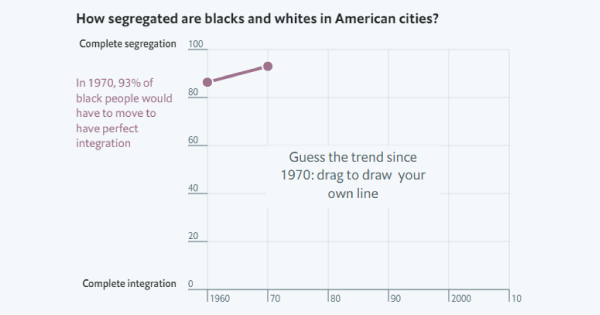
ACTIVITY 4
Fifty years after Martin Luther King Jr.’s death, our nation is still divided. Read more from The Economist about how segregation exists today in cities across America and the costly impact it has on the future of our communities.
SelectHousing Inequity in Your Backyard

Month 9 Challenge
You may be wondering what housing has to do with racial equity. The reality is that housing affordability and who experiences homelessness is largely influenced by our country’s history of racism. According to the Center for American Progress 2019 article, How America’s Housing System Undermines Wealth Building in Communities of Color, “For centuries, structural racism in the U.S. housing system has contributed to stark and persistent racial disparities in wealth and financial well-being, especially between Black and white households.”
In the 1930s, redlining polices were established in several cities such as Chicago. Redlining refers to the federal government’s practice in the 1930s of rating neighborhoods to help mortgage lenders determine which areas of a city were considered risky. The federal Homeowners’ Loan Corporation made maps and shaded neighborhoods red that it deemed “hazardous.” That risk level was largely based on the number of African Americans and immigrants living there. The practice, along with the other segregationist housing policies of the time, had lasting effects on African Americans and immigrants. Even though outward housing discrimination was outlawed a half a century ago, residential segregation between blacks and whites persists today. This is alarmingly prevalent in Midwestern states such as Illinois.
The Midwest and Northeast have some of the most segregated metropolitan areas in the country. Much of their segregation traces back to when and how they were settled. By the 1970s, the industries that had fueled the growth of Illinois’ mid-sized cities were no longer booming. They faced increased competition from foreign companies, and many of their employers expanded to locations in the American South and West. The result is that population growth in the metro areas slowed, especially among whites. The black population in those metro areas, though, continued to surge. Since 1970, the number of African Americans in the Champaign-Urbana metro has nearly tripled. It has more than doubled in the Bloomington, Peoria, Rockford and Springfield metro areas. While the white population around Decatur was dropping by 27 percent, the black population was growing by more than 50 percent. The continued racial sorting was not merely the product of people wanting to live with people like themselves. It was driven by policies making it difficult for minorities to live in predominantly white communities, specifically by making it difficult to rent there. Today, 62 percent of black households in Illinois rent their homes, compared with 27 percent for whites.
Please choose two or more of the below activities to complete:
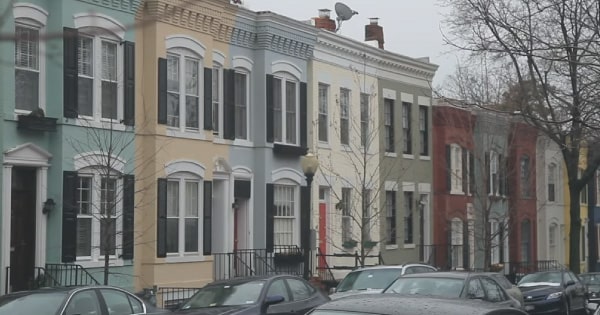
ACTIVITY 1
Watch this 5-minute video from the Urban Institute exposing how housing discrimination against people of color still occurs today.
Select
ACTIVITY 2
Read this brief article from the National League of Cities Embedding Racial Equity in Housing.
Select
ACTIVITY 3
Watch this 7-minute video about how housing discrimination led to wealth inequality.
Select
ACTIVITY 4
Journal about your own experiences of home and property. You might consider:
- Did your parents own a home or land? How did they acquire it?
- If not on a reservation, how did the land transition from Indigenous stewardship to your family?
- Was the community racially integrated or segregated? How did it end up that way?
- How have property values and demographics in that community changed over time?
- How does this history of land ownership affect your economic situation?
HOW RACISM AFFECTS OUR HEALTH

Month 10 Challenge
Inequalities are exacerbated by the pandemic. Households of all ages, genders, races, and ethnicities, and households in rural, urban, and suburban areas, are all impacted by the COVID-19 pandemic. But sheltering in place is a luxury that many ALICE families cannot afford. Differences in income and savings play a role in who can stay home, buy protective gear and essential items, take time off work when sick, and access quality health care.
The COVID-19 pandemic has shed light on the disproportionately high number of deaths in the black community. New statewide data is exposing racial fault lines among people who die from COVID-19 and those who don’t, 42% of deaths in the first months of the pandemic afflicting Black Illinoisans even though they represent just 15% of the population. In Chicago, black residents make up about 29% of the city’s population, however 72% of the city’s residents who died from COVID-19 at the onset of the pandemic were black. And according to the public health commissioner, 52% of those testing positive were black.
Health care leader, Brenda Battle, vice president of University of Chicago Medicine’s Urban Health Initiative and its chief diversity, inclusion and equity officer stated, “I think that health care has realized that the impact that COVID has had on black and brown communities is not happenstance, that long years of compounding health care disparities, structural issues, policies that are basically racist policies that impeded equity in our organizations, are a reality. We have to realize that we have contributed to these realities and we have to do our part in addressing them.”
You may have heard about the wealth gap, but have you heard about the wealth-health gap? According to the NY Times 1619 Project, “racial health disparities are foundational as democracy itself.” Socioeconomic status and institutional racism lead to disparities across living conditions, limit access to quality health care, and contribute to chronic stress. These factors lead to shorter life spans and higher likelihood of adverse health outcomes for people living in poverty and people ofIn Illinois, we are seeing how race and income can disproportionately impact individuals’ health. Importantly, the studies cited below illustrate that this is not a result of individual choices, but rather institutional racism:
Published in the journal, Nature, a recent study found that millions of black people have been affected by racial bias in health-care algorithms used by many U.S. hospitals, resulting in black people being less likely than white people who were equally sick to be referred to programs that aim to improve care for patients with complex medical needs.
A study by the American Bar Association notes that “the poverty in which black people disproportionately live cannot account for the fact that black people are sicker and have shorter life spans than their white complements…racial and ethnic minorities receive lower-quality health care than white people—even when insurance status, income, age, and severity of conditions are comparable.”
Please choose two or more of the below activities to complete:
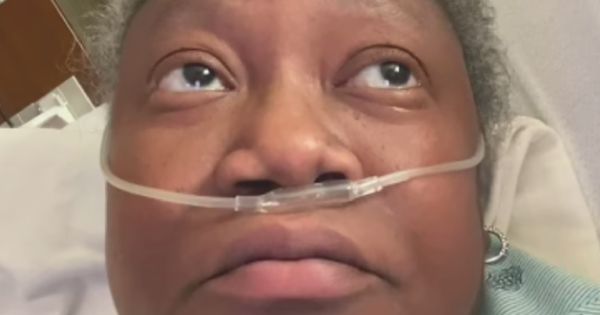
ACTIVITY 1
Read the story about the recent COVID-19 death of Dr. Moore and the racial bias it demonstrates in the U.S. health care system.
Select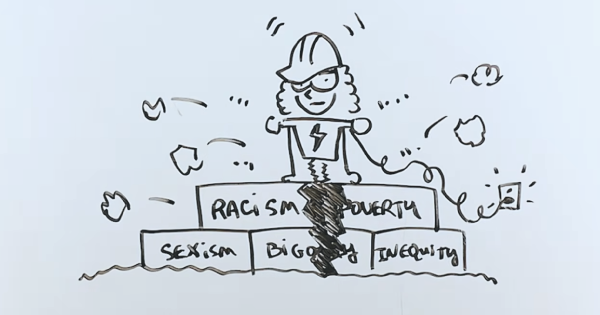
ACTIVITY 2
Hear Dr. Camara Phyllis Jones explain social determinants of health through her analogy of the “cliff of good health” in a video collaboration with the Urban Institute.
Select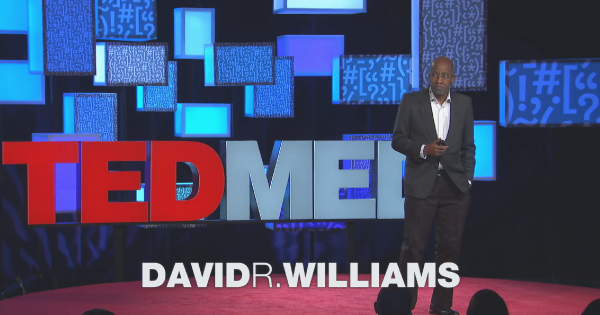
ACTIVITY 3
Watch David. R Williams, a public health sociologist, on the TED stage discuss why race and deep-rooted systemic racism have such a profound impact on health.
Select
ACTIVITY 4
Check Out this Fact Sheet from the American Psychological Association exploring the compounding impact of socioeconomic status and race on health.
Select
ACTIVITY 5
Hear the story of Henrietta Lacks, an African American woman whose cells have been used to test the effects of radiation and poisons, to study the human genome, to learn more about how viruses work, and played a crucial role in the development of the polio vaccine. It is most important to note that, while Ms. Lacks’ cells have been the source of life-saving medical solutions, no consent was obtained to culture her cells, nor were she or her family compensated for their extraction or use.
SelectENVIRONMENTAL JUSTICE

Month 11 Challenge
Despite wanting the best for their families, people with limited means are often less geographically mobile, and have fewer affordable choices when deciding where to live. And often, their voices are not heard in society’s decision-making process. This has led to residents with low incomes, and often also people of color, living in areas with high rates of air and water pollution, such as in industrial areas, near highways, or in close proximity to toxic waste sites.
Studies have shown that black people are exposed to more pollutants than white people. Pollution and particulate matter exposure have been linked to asthma, low birth weights, high blood pressure, and other adverse health outcomes. This is environmental racism.
In 2013, the U.S. Environmental Protection Agency determined that Peoria and Tazewell counties were the home to some of the most toxic air in Illinois. That was in part due to the high levels of sulfur dioxide emissions from local coal plants, such as the Edwards coal plant that recently closed.
Chicago’s Southeast side and Little Village communities experience a higher exposure to pollution, proximity to experimental hazards, and number of atrisk community members.
Please choose two or more of the below activities to complete:

ACTIVITY 1
Read The Atlantic’s coverage of the EPA National Center for Environmental Assessment’s 2018 report that showed how people of color are more likely to experience exposure to pollutants.
Select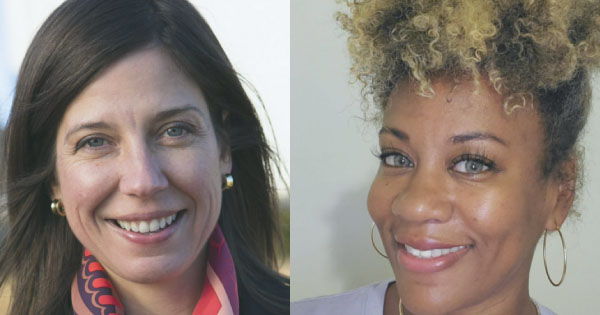
ACTIVITY 2
Read a conversation between the State Director for The Nature Conservancy in Illinois, Michelle Carr, and Urban Ecologist, Mila Marshall, about race, class and environmental justice.
Select
ACTIVITY 3
Have you heard of environmental racism? Watch this 3-minute video on how numerous systemic issues contribute to differences in exposure to potentially harmful environmental conditions.
Select
ACTIVITY 4
Read a Daily Illini article about student organizations work to improve pollution in Champaign.
SelectTHE RACIAL WEALTH GAP AND FINANCIAL STABILITY

Month 12 Challenge
By 2015, the average income of the top 1% in Illinois was 27 times higher than the average income of the bottom 99% (the 8th highest rate in the country for this measure). The Chicago-Naperville-Elgin metropolitan area had the worst gap in the state, with the top 1% earning 27.8X more than all other earners (ranking 37th highest out all U.S. metropolitan areas). Illinois also has the 8th most regressive state and local tax system in the country: the poorest 20% pay 14.4% of their income on taxes, while the wealthiest 1% pay 7.4% of theirs. Regressive tax systems like Illinois’ contribute to and perpetuate income inequality.
The gap in wealth (savings and assets) is even greater. Unable to save, ALICE families do not have the means to build assets, let alone catch up to those who already have assets (especially those who have been building assets for generations). ALICE families also face more barriers that, when compounded, create an even bigger wealth gap. These include issues like lower pay for women, racial/ ethnic discrimination in homeownership, and student loan debt. According to the U.S. Federal Reserve, White households have a median net worth that is almost 10X higher than that of Black households. To create an economy that works for all of us, we need to understand and address the racial wealth gap.
Prosperity NOW notes only half of Americans realize that there is a wide gap in financial well-being between White households and households of color. Even among those who do recognize the racial economic inequality, there is a widespread misconception that the problem is only based on income. The problem is much deeper than that – when we consider wealth, the financial capital families need to expand their economic opportunity and agency, the disparity facing households of color grows even larger.
Please choose two or more of the below activities to complete:
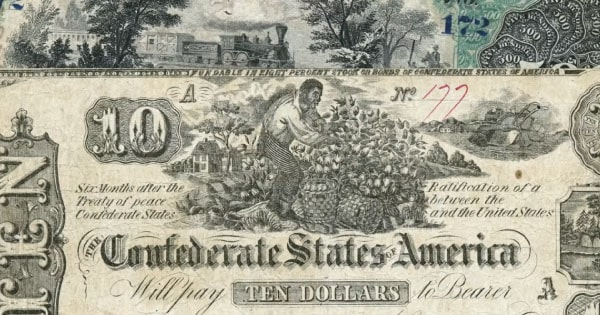
ACTIVITY 1
Interested in seeing how the disparity developed over our nation’s history? Watch an episode of Netflix’s Explained, “The Racial Wealth Gap”. Reflect on what you watched and acknowledge any new information.
Select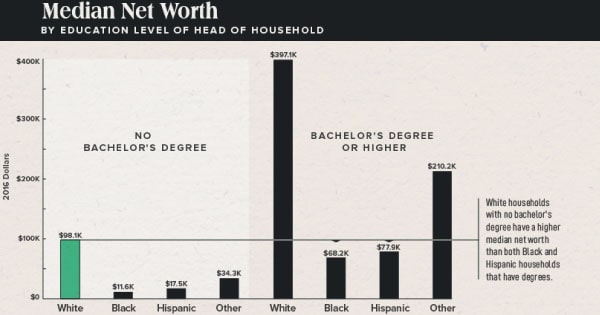
ACTIVITY 2
Take a look at Asset Types Held by Race, by Jenna Ross, Visual Capitalist. Reflect on the asset types held by the race you identify with and those of other race identity groups.
Select
ACTIVITY 3
See how your selected city or region is doing on several key equity indicators and how inequity threatens economic prosperity—National Equity Atlas. Reflect on how you see key indicators showing up in your community and the impact it has on your own economic prosperity. Consider how equitable economic prosperity benefits you. Consider the systemic interconnections; how equal distribution of wealth and power leads to greater sense of community, aligned community values, decrease in crime, increase in property values, desirable place to live, work, and grow, fewer gaps to fill, lower taxes, economic prosperity for all.
Select
ACTIVITY 4
Journal on you and your family’s experiences of work and money.
- What career do you have?
- What did your parents have?
- What was the source of their financial stability—earned income, inherited resources (e.g., a home passed down)?
- How did that affect your family’s earning power?
BEHIND THE STARTING LINE — RACIALIZED OUTCOMES IN EARLY CHILDHOOD

Month 13 Challenge
From infancy through high school, children’s educational outcomes are dependent on the quality of their early learning experience. Quality early childhood education, in particular, has been shown to have a significant positive effect on future success, because brain circuits are actively developing. In fact, 85% of the brain’s development happens before a child enters kindergarten.
Social and emotional health are also key to children’s development. We know that poverty, trauma and other adverse childhood experiences (ACES) can have sustained, negative impacts on children’s ability to succeed. Dr. Roy Wade notes that “We see higher levels of childhood adversity among minority populations, but we need to acknowledge the role that historical inequities and disenfranchisement play in creating the environment in which such traumatic experiences are more likely to occur.”
Did you know? Inequities in education start early with lifelong impacts on children and communities. This gap in opportunity is not due to individual actions, but rather on present social and economic conditions.
- High quality childcare is costly – in 2018, the average annual costs for center-based care ($13,762) for an infant were similar to the average annual tuition for a four-year university in Illinois at ($13,970). Higher costs in child care may mean ALICE families have to make sacrifices in other areas of the budget, a trend that will have a particular impact on single parent families, who are more likely to be below the ALICE Threshold. Reflect on Week 12 and consider how the high cost of care acts as a barrier to a family living in poverty’s access to high quality programs for their children.
- Cost is not the only issue with childcare in Illinois, accessibility is as well. A 2018 analysis found that 58% of Illinois residents, the 12th highest in the nation, live in a “childcare desert,” with a dearth of available childcare providers. The percentage is even higher for Latinx families (65%) and for families living in rural areas (69%).
- In 2018, well before the pandemic began, 31% of Illinois families with children had income below the ALICE Threshold. These families are especially vulnerable to the disruptions that accompany childcare, school, and university closures. Essential workers with children rely on childcare; with closures, they often must put themselves and their children at greater risk. Closures also profoundly affect the childcare industry, whose workers themselves are primarily ALICE. School closures mean that children lose their daily routine, including meals and socialization as well as education. For ALICE families without internet access or home computers, digital learning may leave their children behind.
During this pandemic, Black and Latinx students continue to be more likely to remain remote and are less likely to have access to the prerequisites of learning — devices, internet access, and live contact with teachers. Left unaddressed, these opportunity gaps will translate into wider achievement gaps.
Please choose two or more of the below activities to complete:
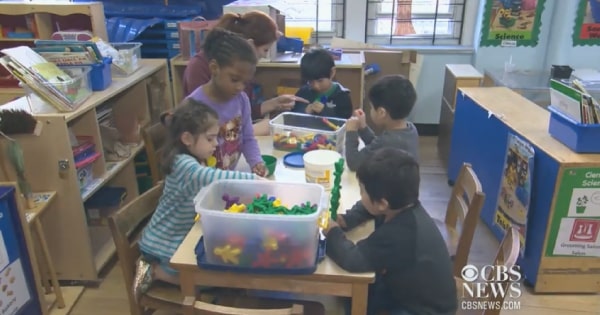
ACTIVITY 1
Watch this 2-minute CBS News report on how systemic racism persists in early childhood education, where Black preschool students are disproportionately facing harsh punishments, like suspension. Reflect on your (or your child) earliest education experience and what you observed (or believed) was happening to Black classmates.
Select
ACTIVITY 2
Read these articles on the need to close the gap in kindergarten readiness in Illinois and Illinois Legislative Black Caucus addressing the importance of eliminating systemic racial disparities in education.
Select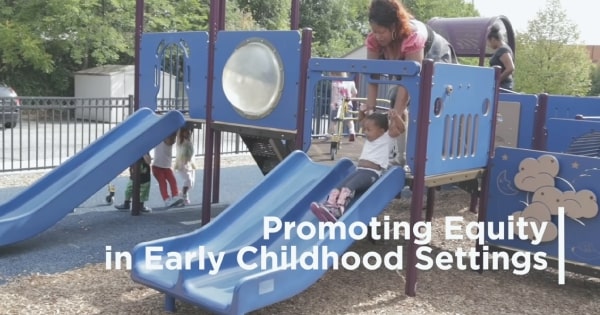
ACTIVITY 3
Watch Recognizing Bias and Promoting Equity in Early Childhood Settings. Explore and compare your biases prior to watching this, and how any potential differences will shape your personal or professional purpose.
Select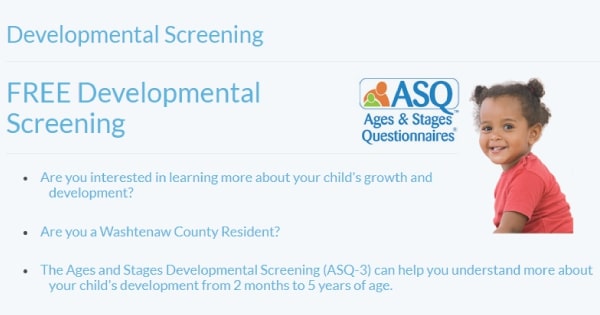
ACTIVITY 4
If you are a parent or caregiver, check out the free developmental screening, the Ages & Stages Questionnaires. Regular developmental screening can help ensure children are on track and identify opportunities for additional support.
SelectEDUCATION AND SCHOOL-AGED CHILDREN

Month 14 Challenge
Earlier in the Challenge, we explored how segregation persists in American communities. Our economically and racially divided neighborhoods are leading to inequitable educational environments and adverse academic outcomes for our youth. Studies show that children from families with low incomes enter high school with literacy skills 5 years behind and are over 4 times more likely to drop out than those from high-income families. Students of color, who are more likely to attend under-resourced schools than their white counterparts, suffer because their teachers work in under resourced school environments with large class sizes. When controlling for socioeconomic status, underfunding almost entirely explains disparities in academic achievement, according to Brookings.
In our State, the achievement gaps remain a serious problem. According to the Illinois State Board of Education non-low-income elementary school students scored an average of 30 percentage points higher in terms of proficiency in both English and Language Arts (ELA) and mathematics than their low-income peers in the Illinois Assessment of Readiness (IAR). This was the same percentage in last year’s report card. The racial achievement gaps also persist at a stubbornly high rate. White students score an average of 30 percentage points higher in proficiency in ELA and math than their African American counterparts and 22 percentage points higher in ELA and 21 percentage points higher in math than their Latinx counterparts.
Please choose two or more of the below activities to complete:
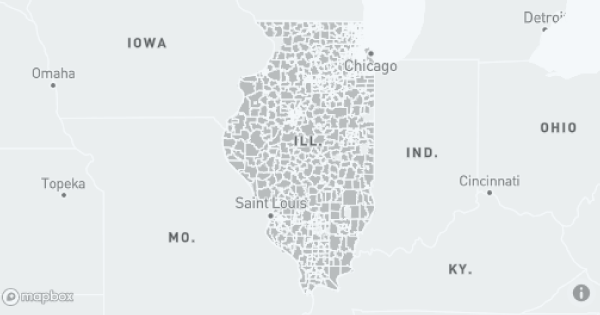
ACTIVITY 1
Check out this interactive database to examine racial disparities in educational opportunities and school discipline. Reflect on your education experiences, and the disciplinary actions taken for your (or your child’s) Black peers. How did this shape your ideas about Black people?
Select
ACTIVITY 2
Watch Boston teacher Kandice Sumner on the TED stage discuss the disparities she sees in her classroom every day because of segregation in our school systems. Reflect on the disparities that impact learning in your local schools due to segregation. Identify your local community resources that are working to address the disparities. Is there a way for you to help magnify their efforts?
Select
ACTIVITY 3
Even though there has been an increase in academic growth in Illinois, gaps persists and proficiency lags. Review The State We’re In Illinois 2019 Report by Advance Illinois (pages 13–17).
SelectADVERSE CHILDHOOD EXPERIENCES

Month 15 Challenge
Adverse Childhood Experiences, or ACEs, have a tremendous impact on lifelong health and opportunity. ACEs are defined as a toxic source of stress with the potential to disrupt a child’s ability to learn, relate, grow, play, communicate, and problem-solve. It can include things like physical and emotional abuse, neglect, caregiver mental illness, and household violence. The more ACEs a child experiences, the more likely he or she is to suffer from things like heart disease and diabetes, poor academic achievement, and substance abuse later in life. Racism is now recognized as an ACE.
Disturbingly, Black and Hispanic children and youth in almost all regions of the United States are more likely to experience ACEs than their white and Asian peers. To some extent, these racial disparities reflect the lasting effects of inequitable policies, practices, and social norms. Discriminatory housing and employment policies, bias in law enforcement and sentencing decisions, and immigration policies have concentrated disadvantage among Black and Hispanic children, in particular, and leave them disproportionately vulnerable to traumatic experiences like ACEs.
Healthy school, community and home environments are critical to preventing children from experiencing ACEs and appropriately supporting students living with chronic stress, so that it does not get in the way of them achieving their aspirations and reaching their full potential.
Please choose two or more of the below activities to complete:
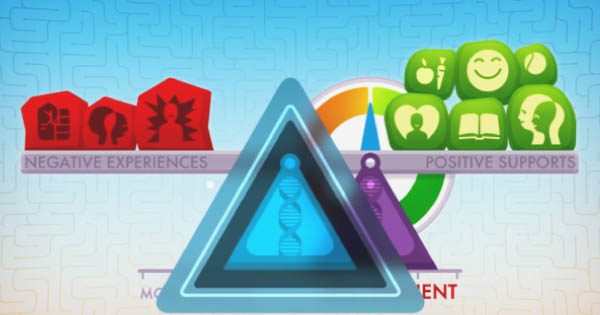
ACTIVITY 1
Assess your ACEs score to see how childhood trauma may be impacting your life. Then, assess your resilience score and explore resources on how to support yourself and others by building resilience. Consider reading My Grandmother’s Hands by Resmaa Menakem and reflect on how trauma has shaped your responses to inequity.
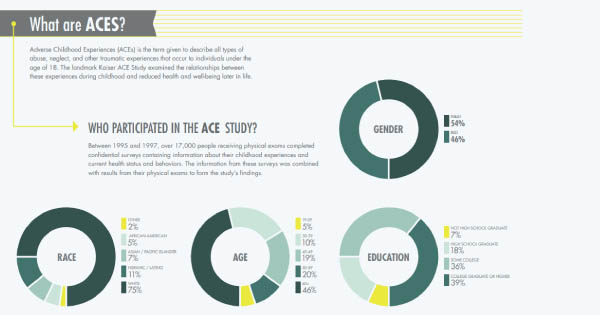
ACTIVITY 2
View this infographic that explains how ACEs affect our lives and society and summarizes findings from a landmark Kaiser study that looks at the link between ACEs and long-term well-being.
Select
ACTIVITY 3
See Pediatrician Nadine Burke Harris on the TED stage explain how the repeated stress of abuse, neglect and parents struggling with mental health or substance abuse issues has real, tangible effects on the development of the brain. Reflect on your own coping skills during the most difficult life experiences and how any privilege may have helped you cope. Consider how different the outcome may have been without that privilege.
SelectEQUITY AND THE LGBTQI+ COMMUNITY

Month 16 Challenge
Imagine not feeling accepted at home, in your community or at school because of your gender identity or sexual orientation. Like race and socioeconomic status, inequities for people identifying as lesbian, gay, bisexual, or transgender (LGBTQI+) can be seen across many dimensions, including healthcare, education, and in the workplace. Research from the American Progress Institute shows that LGBTQI+ individuals experience widespread discrimination, often manifesting itself as getting passed over for promotions, being bullied in schools, being refused healthcare, or being denied equal treatment at a store or hotel.
The intersectionality of race and sexual orientation and gender identity also has compounding effects on individuals’ well-being: Black transgender and gender non-conforming individuals experience some of the highest levels of discrimination and threats on their personal safety.
Discrimination on the basis of sexual orientation was outlawed in the City of Chicago through an ordinance that was passed in 1988 with the help of activists from Equality Illinois. In 2005, Illinois passed an amendment to the Illinois Human Rights Act that prohibits discrimination on the basis of sexual orientation and gender identity in employment, housing, and public accommodations.
Did you know? Illinois is the fourth state in the country to legally mandate the study of LGBTQI+ history. This interactive map gives a snapshot of LGBTQI+ equality by state and counts the number of laws and policies within the state that help drive equality for LGBTQI+ people.
Please choose two or more of the below activities to complete:
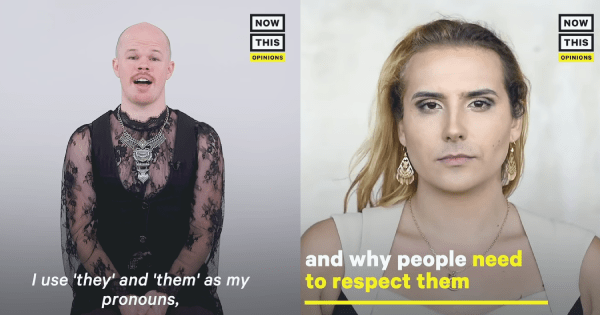
ACTIVITY 1
Watch this quick video to learn why using correct pronouns is so important. Add your pronouns to your email signature to show your advocacy for LGBTQI+ individuals.
Select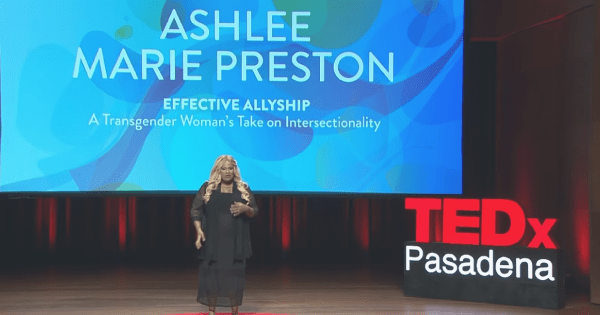
ACTIVITY 2
Watch Ashlee Marie Preston on the TEDx stage discuss effective allyship and intersectionality from her perspective as a Black transgender woman. She discusses when and how to speak up, and what it truly means to be an ally. Reflect on times you’ve shown up as an ally or been supported by an ally. How can you contribute to more such experiences?
Select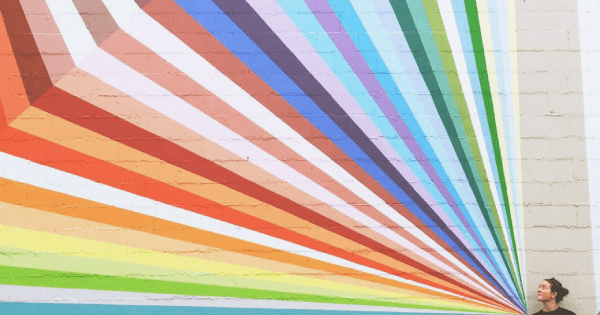
ACTIVITY 3
Read this article exploring how schools are struggling to support LGBTQI+ students and how we can work to create safe spaces for youth to thrive. Consider how you can support LGBTQI+ students in your school district.
Select
ACTIVITY 4
Journal on your own experience of feeling safe or unsafe based on your sexual orientation and gender identity.
- If you are getting married, can you easily find someone to officiate your wedding?
- Can you hold hands or kiss in public?
- Can you find clothes that match your gender identity and body type?
- Can you openly display photos or talk about your spouse at work?
RACISM AND OUR LEGAL SYSTEM

Month 17 Challenge
What do you think about when you consider our legal system?
Is it prisons? Is it police? Is it judges? The answer could be any of the above or none of the above. The legal system is a set of institutions that enforce actions deemed illegal under local, state, and federal criminal laws. These institutions include police, prosecutors’ offices, courts, prisons, and parole offices.,/p>
Many of us rely on this system to provide justice. But what exactly is “justice?” Justice is the principle that people will receive what they deserve without favor towards any one person or groups of people. However, justice may mean different things to different people. So can our legal system. While some believe our system is fair and just, there are many who believe it has never been fair; that it favors people who are affluent; and it is biased against people of color. History and research can help us understand why people view this system so differently.
What contributes to these disparities? Many factors, including racial bias. A recent study by Stanford University analyzed millions of police stops conducted from 2011 to 2017 across 21 state patrol agencies, including Illinois. They found that police stops and searches suffered from “persistent racial bias” and that Black drivers were less likely to be stopped after sunset when a ‘veil of darkness’ masks the color of skin, suggesting bias in police stops. There are several other studies that have analyzed the racial bias and disparities in jury selection, sentencing, the death penalty, school suspensions, etc.
There is also an undeniable historical link between racial injustice and our criminal justice system. In our activities below, we’ll learn how American policing grew out of efforts to control the labor of poor and enslaved people in the 19th century and beyond.
Considering everything happening in our country in the last year, from the COVID-19 pandemic and social unrest, now is the perfect time to reimagine the kind of legal system we want for our communities. Neutral policies will not address systemic problems. Systemic problems require systemic solutions. And because a system is comprised of people, we all have a role to play in making it fairer for everyone. Racism did not happen by accident so it will never disappear on its own. Together, we can envision and implement equitable laws, policies, and practices that eradicate racism at its core.
Did you know?
- More than 60% of people in prison in the US are people of color. Black men are six times more likely to be incarcerated as White men. For Black men in their 30’s about 1 in 12 are likely to be in prison on any given day.
Source: Trends in U.S. Corrections, The Sentencing Project. - Approximately 16% of children in the United States are Black, yet they make up 28% of juvenile arrests.
Source: Shadow Report to the United Nations on Racial Disparities in the United States Criminal Justice System, The Sentencing Project.
Please choose two or more of the below activities to complete:

ACTIVITY 1
Watch A Prosecutor’s Vision for a Better Justice System. In this TED Talk, Adam Foss, a prosecutor with the Suffolk County District Attorney’s Office in Boston, makes his case for a reformed justice system that replaces wrath with opportunity.
Select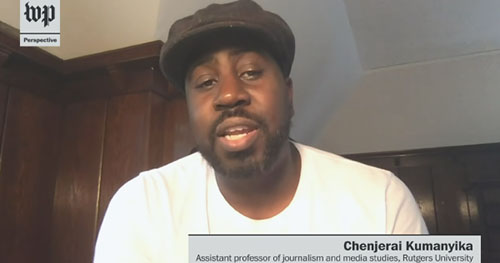
ACTIVITY 2
Watch The Origins of Law Enforcement in America. Khalil Gibran Muhammad and Chenjerai Kumanyika explain how American policing grew out of efforts to control the labor of poor and enslaved people in the 19th century and beyond.
Select
ACTIVITY 3
Read Hidden Consequences: The Impact of Incarceration on Dependent Children and learn how children of incarcerated parents face profound and complex threats to their emotional, physical, educational, and financial well-being.
Select
ACTIVITY 4
Read A Better Way: 50+ Action Items to Fight Against Racism In Your Community by Joshua V. Barr. After reading the article, what option(s) do you believe you can undertake with others to create a more just local community?
Select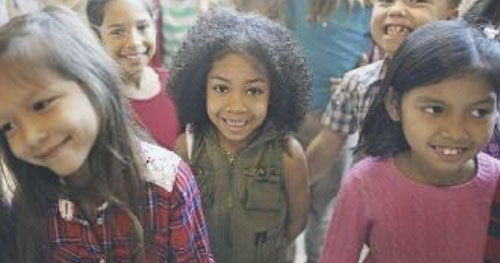
ACTIVITY 5
Read about how researchers from University of Illinois at Chicago study how race affects perceptions of law-involved Blacks, school discipline.
Select
LONG WATCH ACTIVITY
Watch 13th, an award-winning American documentary film from 2016 that explores the intersection of race, justice, slavery, and mass incarceration in the United States. Or, the PBS four-episode series College Behind Bars, directed by award-winning filmmaker Lynn Novick, which tells the story of a small group of incarcerated men and women struggling to earn college degrees and turn their lives around in one of the most rigorous and effective prison education programs in the United States—the Bard Prison Initiative
BUILDING A RACE EQUITY CULTURE

Month 18 Challenge
Every day in the workplace, individuals face challenges being their authentic selves. As leaders and colleagues, we each have a role to play in creating inclusive workspaces. Diverse perspectives enrich our workplaces, and studies are showing that involving diverse voices improves performance, problem solving and decision making. Yet, people of color and women are underrepresented in C-Suite, upper management, and Board roles compared to their representation in the overall working population. The culture of an organization provides insight into the racial dynamics and racial equity/parity within the organization. This week we will focus on how you can create a race equity culture at work.
Please choose two or more of the below activities to complete:
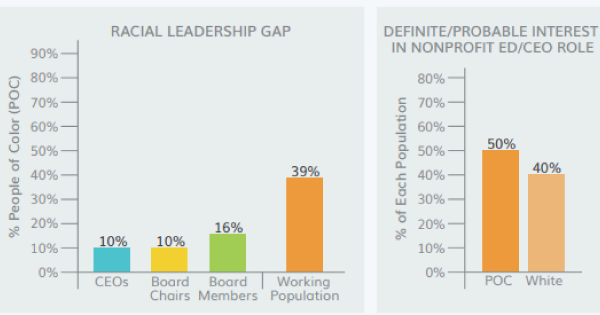
ACTIVITY 1
Read the 2-pager Building a Race Equity Culture in the Social Sector or download the full report entitled Awake to Woke to Work: Building a Race Equity Culture. Focus on the explanation of dominant culture in the context of building a race equity culture, found in the two-page executive summary on pages 2-3. Explore ways you can help build a race equity culture in your organization, neighborhood, and/or community.
Select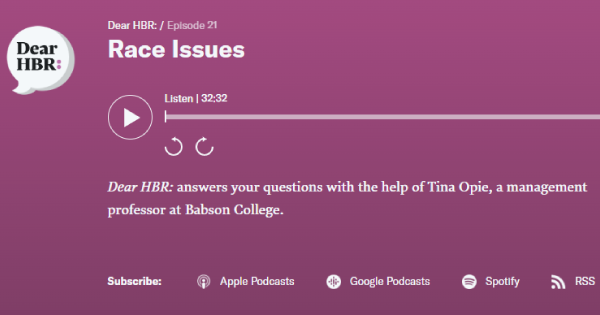
ACTIVITY 2
Listen to this podcast featuring Harvard Business Review co-hosts Alison Beard and Dan McGinn responding to some common challenges faced by businesses in promoting diversity and inclusion in their workplace (transcript included). Explore ways to help support your organizational leadership to promote diversity and inclusion.
Select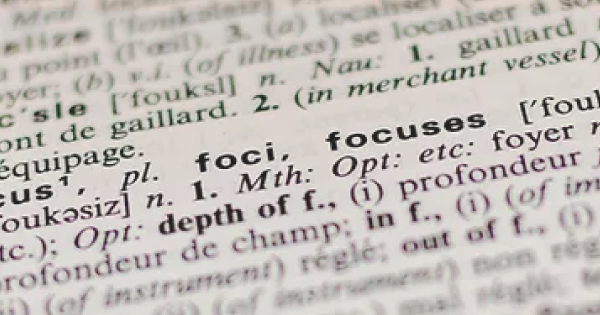
ACTIVITY 3
Get comfortable with words and language to engage in more inclusive and respectful dialogue — learn from Racial Equity Tools’ new Glossary of Racial Equity Terms. Examine which terms youmay have been using that need to be replaced with more appropriate racial equity terms.
Select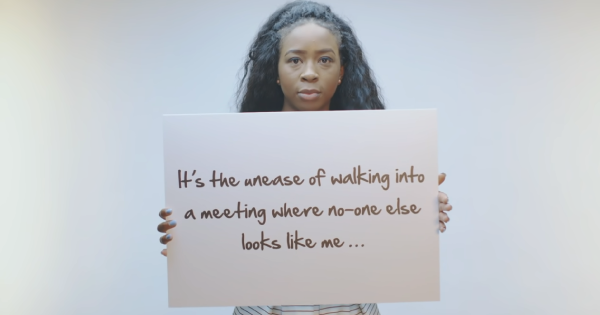
ACTIVITY 4
Take courage by knowing you are not alone, watch this 3-minute video shedding light on common struggles people face bringing their authentic selves to the workplace. Reflect on struggles your colleagues (family or friend group) may be facing in bringing their authentic selves into space with you. Explore ways you contribute to this phenomenon.
SelectBEING AN ALLY

Month 19 Challenge
In a time when it feels like the world is becoming increasingly polarized, John A. Powell asks, “How can we build bridges?” In his keynote at the Othering & Belonging Conference, he says “We must hear other people’s suffering and stories. Compassion means to suffer with others.”
What does it mean to be an ally? An ally seeks to understand what it feels like for another person or group to be oppressed, and despite knowing you will never fully understand how it feels, is committed to valuing and supporting people who are marginalized.
Remember, being an ally is not an identity, it is a continual process — something that you must work at, be intentional about, and commit to every day. Explore what active support looks like as an ally in “Guidelines for Being Strong White Allies”, adapted from Uprooting Racism: How White People Can Work for Social Justice.
Please choose two or more of the below activities to complete:
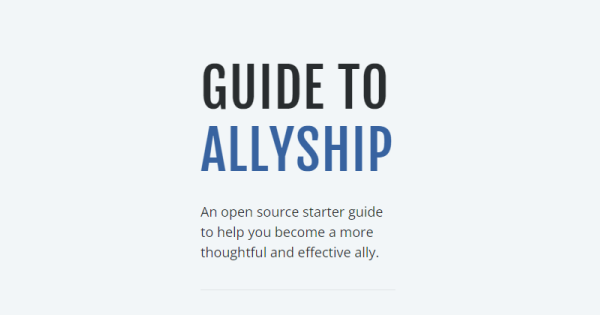
ACTIVITY 1
Read the Do’s and Don’ts of Allyship that are important to know as you practice and evolve your role in supporting equity and inclusion. Explore the do’s and don’ts you’ve perpetuated as an ally (or experienced from an ally) in support of equity and inclusion. What may change for you moving forward?
Select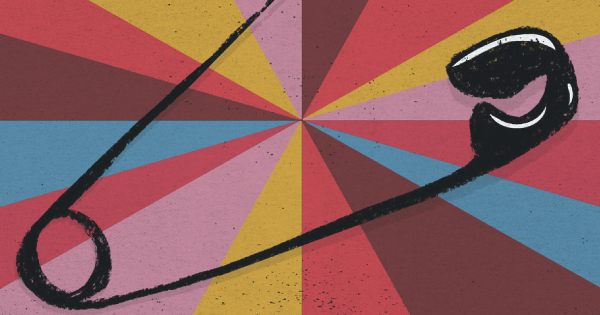
ACTIVITY 2
Listen to NPR’s Code Switch and explore the complexities of allyship. Explore how you feel after listening to the 30-minute podcast. How can you improve your allyship or support allies?
Select
ACTIVITY 3
Read about how to be a better ally in the workplace. Looking for a place to start? Take time to really listen to the experiences of those around you.
Select
ACTIVITY 4
Listen to this podcast discussing the Allyship Continuum and how you can go from unaware to accomplice. Explore where you are along the continuum in contrast to where you want to be.
Select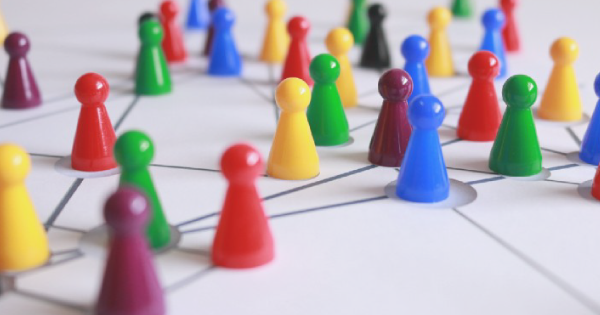
ACTIVITY 5
Go further and learn more about the important difference between an Ally vs. Accomplice in this piece published by Medium.
Select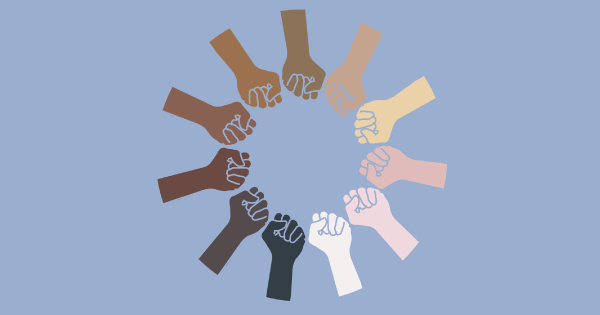
ACTIVITY 6
Join a movement in your community. Attend a workshop like Poverty Simulation or Bystander Intervention. Join a local monthly book group discussion or start one yourself!
TOOLS FOR THE RACIAL EQUITY CHANGE PROCESS

Month 20 Challenge
Over the past 19 weeks, we have learned how racial inequities permeate our communities on individual, institutional and systemic levels. We are all impacted by the system of racism in our country and therefore all responsible for dismantling the structures that allow it to persist. To be antiracist is a radical choice in the face of history. But change is possible and there are many tools we can employ as individuals and organizations to drive individual and community transformation. We will highlight a few of these tools below but encourage you to explore Racial Equity Tools, a comprehensive site of resources designed to support learning, planning, acting, and evaluating efforts to achieve racial equity.
Creating equitable outcomes also requires that we change the way we talk about members of our community, focusing on their aspirations rather than their challenges. In practice, this is called asset-framing and uses narratives to change the unconscious associations ingrained in our society. The opposite practice of deficit-framing, or defining people by their challenges, encourages continued stigmatization of groups of individuals. The words we use, the language we use, matters.
Please choose two or more of the below activities to complete:

ACTIVITY 1
Learn more about how the Skillman Foundation is using asset-framing in their work with Detroit Children, and watch videos from Trabian Shorters, founder and CEO of BMe Community, discuss how to put asset-framing into practice. Then read this Beginner’s Guide to Asset Framing to learn more about how our communication impacts our ability to achieve racial equity.
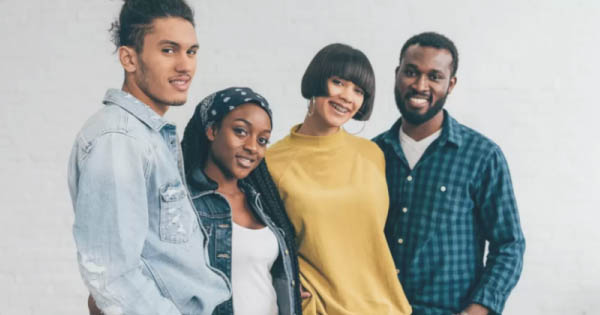
ACTIVITY 2
Read this short article about resilience and its association with the strengths within communities of color.
Select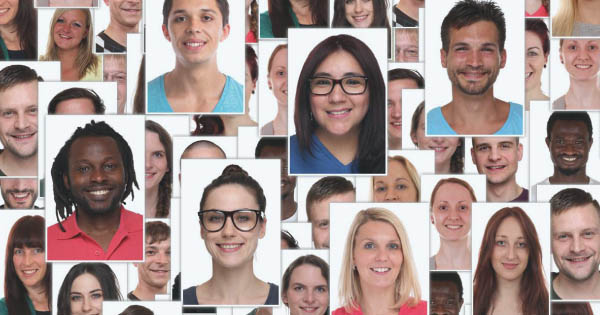
ACTIVITY 3
Work to become antiracist and learn from Ibram Kendi. Explore how you feel and what the reading taught you, write down questions you have, and check out the next book to read!
Select
ACTIVITY 4
One of the best ways to continue to build empathy and learn about race is to start a conversation. Read Race Forward’s 10 Ways to Start a Conversation About Race, then start a conversation with friends, family, school, and work colleagues.
SelectFINAL REFLECTIONS

Month 21 Challenge
Today’s challenge is to take time to reflect on your experience. Research shows that a critical component to learning is taking time to reflect or being intentional about processing the lessons being taught by your experiences.
Please complete the below activity:

ACTIVITY 1
Reflection Questions
- What are my identities and in what ways have my identities impacted my life? Are there identities of mine that have provided me higher social capital or privilege in certain environments, or vice versa?
- What were some of my assumptions about race and racial inequity before I started this 21-week challenge? In what ways have these assumptions been challenged? In what ways have they been reinforced?
- Where have I seen evidence of inequities and systemic and structural racism in my community?
- What two to three shifts, changes or actions can I take to create a more inclusive and equitable environment in my home, workplace, and community?
- As you prepare to complete the 21 Week Equity Challenge, we encourage you to write down a goal you have moving forward. Research shows that when you write down your goals, you are more likely to commit to them and achieve them.
Footer
Find us
MVP Staffing
1751 Lake Cook Road
Suite 600
Deerfield, IL 60015
United States
1751 Lake Cook Road
Suite 600
Deerfield, IL 60015
United States
Sign up
Sign up for our newsletter and stay tuned!
Thank you for your information!
You will now start receiving newsletters.
Close

